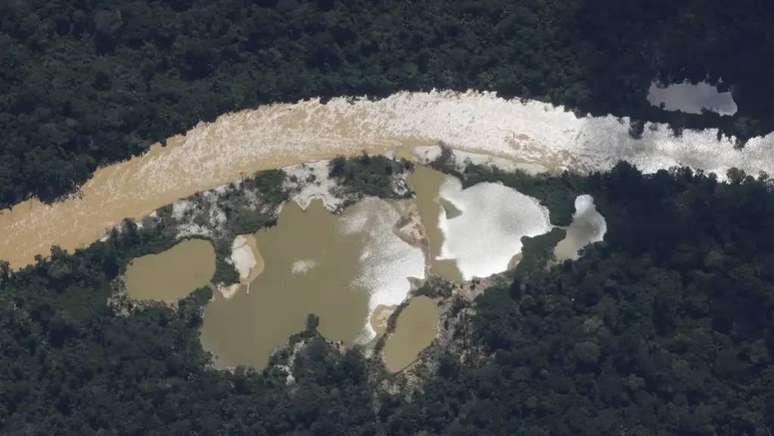Summary
The research traced the epidemiological scenario of malaria in Amazonian mining territories over the past 13 years; Mato Grosso and Roraima recorded the greatest increase in cases from 2017 to 2022, related to illegal mining areas on indigenous lands; Disease control strategies include reviewing environmental legislation and expanding health surveillance.
Malaria is spreading in the Amazon region mainly due to illegal mining associated with deforestation. A study by the University of Brasilia (UnB) brings together previous scientific findings and highlights that the mining area in indigenous lands has increased by 102% between 2018 and 2021. This fact may have had an impact on the increase in malaria cases among the Yanomami indigenous lands, in Roraima, and Munduruku, and in Pará, according to the Published analysis Monday (24) at “Journal of the Brazilian Society of Tropical Medicine”.
The work outlines the epidemiological scenario of malaria in mining areas in the North of the country for a longer period of time, from 2011 to 2023, and proposes strategies for controlling the incidence of the disease in the region, based on a literature review of the main studies on the subject. The data of the disease cases registered in these 13 years in the Epidemiological Surveillance Information System (Sivep-Malaria) and in the Notifiable Diseases Information System (Sinan), of the Ministry of Health, were used.
According to researcher Pablo Sebastian Tavares Amaral, from 2018 to 2021, a 108% increase in malaria cases was recorded in patients from mining areas in the Amazon region. “These numbers could be underestimated because, since mining is illegal, many fail to indicate that they are miners,” emphasizes Amaral, co-author of the study and a doctoral student in the Postgraduate Program in Tropical Medicine at UnB.
In 13 years, more than 253,000 cases of malaria have been recorded in mining areas. The data is starting to rise, especially since 2020. Among the most affected regions are the states of Mato Grosso and Roraima, with an increase in cases between 2017 and 2022, especially in illegal mining areas. According to research data, in 2020, 59% of Brazilian mining activity was illegal.
By mapping the mining areas affected by malaria, the research provides results that can guide disease surveillance and control actions in the Amazon. “Knowing the priority areas and the dynamics of the disease is essential to better target actions,” Amaral explains. He points out that because they are illegal, mining areas have little health infrastructure, which makes it difficult to treat the disease.
According to the study, the large number of illegal mines poses challenges for their monitoring. These areas end up becoming breeding grounds for mosquitoes that transmit malaria. Therefore, as a strategy, the study identifies the need to review legislation to increase control over deforestation and mining, especially on indigenous lands.
In addition, other strategies mentioned include the expansion of malaria surveillance, through the action of community agents, and multisectoral actions to provide immediate assistance to indigenous peoples. Another proposal of the study is to link data on deforestation and malaria, by including deforestation alerts in the National Malaria Prevention and Control Program. These actions can have an impact on improving malaria diagnosis and treatment in indigenous lands and other regions most affected by the disease.
The research group continues to conduct studies on malaria in the Amazon, trying to understand its impact large hydroelectric works in the spread of the disease. “These projects go through an environmental authorization process that includes malaria in a specific plan, different from illegal mining,” Amaral explains. The researcher seeks to understand whether these targeted actions can have an effect on disease control in the region.
Source: Terra
Ben Stock is a lifestyle journalist and author at Gossipify. He writes about topics such as health, wellness, travel, food and home decor. He provides practical advice and inspiration to improve well-being, keeps readers up to date with latest lifestyle news and trends, known for his engaging writing style, in-depth analysis and unique perspectives.









